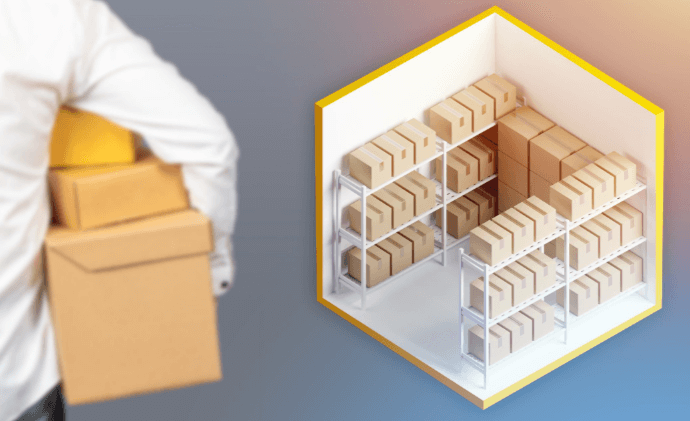Top Tips for Organizing Your Storage Unit

Organizing a storage unit can seem like a daunting task, but with the right approach, it can transform into a manageable and even satisfying process. Whether you’re storing items during a move, keeping seasonal items out of the way, or simply decluttering your home, having a well-organized storage unit can save you time, effort, and stress. This article will provide you with comprehensive tips for organizing your storage unit, helping you create a space that is not only orderly but also functional.
Understanding Your Storage Needs
Before diving into the organization process, it’s crucial to assess your storage needs. Consider the types of items you’ll be storing—are they seasonal decorations, important documents, furniture, or a mix of everything? Understanding what you need to store will help you determine the size of the unit and the organization method best suited to your needs.
Start by making an inventory of all the items you plan to store. This inventory will serve as a guide when arranging your items in the unit and will be invaluable if you ever need to find something specific. Additionally, it’s essential to categorize your items. Group similar items together, such as kitchen supplies, books, or clothing. This will help streamline the process and make it easier to retrieve items later.
Choosing the Right Storage Unit Size
Selecting the right storage unit size is a critical first step in organizing your storage space. If you choose a unit that’s too small, you’ll end up with a cluttered mess, making it difficult to access your belongings. On the other hand, selecting a unit that’s too large can lead to wasted space and unnecessary expenses.
To determine the appropriate size, measure the dimensions of your largest items and estimate the amount of space they will take up. Keep in mind that you can stack items to maximize vertical space. Most storage facilities offer a range of sizes, from small lockers to large garage-like units, so take your time to choose the one that fits your needs.
Creating a Storage Plan
A well-thought-out storage plan can make a significant difference in how easy it is to manage your unit over time. Start by sketching out a rough plan of where each group of items will go. Place frequently accessed items near the front of the unit, and less frequently used items towards the back.
Consider using a grid system or dividing the unit into sections to keep similar items together. For example, dedicate one corner of the unit to holiday decorations and another to outdoor equipment. This method will help you maintain order and quickly locate items when needed.
Packing Items Efficiently
Packing your items correctly is crucial to ensuring they remain in good condition while in storage. Use sturdy boxes that can be easily stacked, and avoid overpacking them to prevent damage. Label each box clearly on multiple sides with a description of its contents and the room it belongs to.
Fragile items should be wrapped in bubble wrap or packing paper and placed in boxes with plenty of padding. For larger items, like furniture, disassemble them if possible to save space. Store items vertically when you can, but make sure that heavier items are on the bottom to avoid crushing more delicate belongings.
Utilizing Shelving and Containers
Shelving units are an excellent investment for any storage unit, especially if you plan on accessing your items frequently. By utilizing vertical space, you can store more items while keeping the floor clear for easy movement. Metal or plastic shelving units are sturdy options that can hold a variety of items.
Clear plastic containers are another great tool for organizing your storage unit. Unlike cardboard boxes, they allow you to see what’s inside without having to open each container, saving time and reducing the risk of creating a mess when searching for something. Use uniform-sized containers to stack them neatly.
Labeling and Inventory Management
Labeling is a simple yet effective way to keep your storage unit organized. As you pack each box or container, label it clearly with its contents. Consider using color-coded labels or tape to differentiate between categories, such as kitchen items, holiday decorations, or clothing.
Creating an inventory list that corresponds with your labeled boxes will also make it easier to locate items later. You can keep a physical copy of this list or use a digital inventory app to track your belongings. Make sure to update the list every time you add or remove items from the unit.
Maximizing Vertical Space
To make the most of your storage unit, think vertically. Stack boxes and containers as high as possible, with the heaviest and sturdiest items at the bottom. Use shelving units to create multiple levels of storage and keep the floor area clear.
If you’re storing long items like skis, poles, or planks, consider hanging them from hooks attached to the walls of the unit. This method keeps them out of the way and frees up floor space for other items. For particularly tall units, consider investing in a small step ladder to easily access items stored higher up.
Protecting Your Belongings
Protection is key when storing items for an extended period. Consider using dust covers for furniture, plastic wrap for mattresses, and desiccant packs to control humidity and prevent mold. Climate-controlled units are an excellent choice for items sensitive to temperature and humidity changes, such as electronics, artwork, and important documents.
When storing clothing or fabric items, use vacuum-sealed bags to save space and protect against moisture. Make sure that all items are dry before storing them to prevent mold and mildew growth. If you’re storing metal items, consider applying a thin layer of oil to prevent rust.
Arranging Furniture and Large Items
When storing furniture and large items, proper arrangement is crucial to make the most of your space. Disassemble furniture where possible, and store pieces vertically to save space. For example, remove table legs and stand tabletops on their sides.
Place larger items like couches or mattresses against the walls of the unit to create more central space for smaller boxes and containers. If you have large, awkwardly shaped items, store them in corners to keep them out of the way. Remember to cover furniture with protective materials to prevent scratches and damage.
Maintaining Accessibility
A well-organized storage unit should allow you to access your belongings without having to move everything around. Leave a small aisle down the center of the unit so you can easily reach items stored at the back. Store items you’re likely to need sooner at the front of the unit, and those you’ll need less frequently towards the back.
Avoid stacking boxes too high or too tightly packed, as this can make it difficult to access items without causing an avalanche. Instead, create stable stacks and use shelving to keep the unit organized and accessible.
Utilizing Storage Unit Layout
The layout of your storage unit can greatly impact its functionality. Consider the shape and size of the unit when planning where to place your items. Long, narrow units may require a different arrangement than square or rectangular ones.
If possible, place items along the walls, leaving the center open for easy access. You might also consider using the “U-shape” method, where items are arranged around the perimeter of the unit, leaving the middle open. This approach allows for quick and easy access to all items.
Using Pallets to Elevate Items
One often-overlooked tip is to use pallets on the floor of your storage unit. Elevating your items off the ground can protect them from potential water damage in case of flooding or spills. Pallets also allow for better air circulation around your belongings, reducing the risk of moisture buildup.
If you’re storing items in a non-climate-controlled unit, pallets can be especially useful for preventing direct contact with the cold or damp floor. This small step can make a big difference in preserving the condition of your belongings.
Preventing Pests in Your Storage Unit
Pest prevention is essential in any storage unit, especially if you’re storing items for an extended period. Start by ensuring that all items are clean and free of food particles before storing them. Avoid using cardboard boxes, as they can attract insects and rodents. Instead, opt for plastic containers with tight-fitting lids.
Consider placing mothballs, cedar blocks, or pest control sachets in your unit to deter pests. If you’re storing items like clothing or fabric, use airtight bags to keep pests out. Regularly inspect your unit for any signs of pests, and take action immediately if you notice anything amiss.
Security Considerations
Security should be a top priority when storing your belongings. Choose a storage facility with robust security features, such as 24-hour surveillance, gated access, and on-site management. Use a high-quality lock on your unit, and avoid using easily breakable or generic locks.
If you’re storing valuable items, consider taking extra precautions, such as insuring your belongings or renting a unit with individual alarm systems. Keeping an updated inventory of your stored items can also help in case of theft or loss.
Seasonal Rotation of Items
If you’re using your storage unit for seasonal items, consider implementing a rotation system. Store items you’re likely to need in the upcoming season towards the front of the unit, and move out-of-season items to the back.
For example, as winter approaches, move holiday decorations, winter sports equipment, and heavy clothing to the front of the unit. When spring arrives, switch these out with summer items like camping gear, garden tools, and light clothing. This system makes it easy to access the items you need without disrupting the entire unit.
Avoiding Common Storage Mistakes
Even with the best intentions, it’s easy to make mistakes when organizing a storage unit. One common mistake is not using the space efficiently. Overpacking the unit or failing to stack items properly can lead to wasted space and make it difficult to find what you need.
Another mistake is not labeling boxes clearly. Without proper labels, you’ll likely spend a lot of time searching for specific items, leading to frustration and disorder. Additionally, avoid storing items directly on the floor, as this can lead to damage from moisture or pests.
Planning for Future Access
As you organize your storage unit, consider how your needs might change over time. Plan for future access by leaving space for new items and arranging your unit in a way that allows for easy addition and removal of items.
Think about the frequency with which you’ll need to access certain items. For example, if you’re storing business inventory or frequently used tools, keep them in a location that’s easy to reach. Being proactive in your organization will save you time and effort in the long run.
Using Storage Unit Apps
In today’s digital age, there are numerous apps designed to help you manage your storage unit more efficiently. These apps can assist with inventory management, box labeling, and even creating a digital map of your unit’s layout.
Apps like Sortly or MyStuff allow you to catalog your belongings with photos and descriptions, making it easier to track what’s in your storage unit. Some apps also offer barcode scanning features, so you can quickly find specific items without having to sift through multiple boxes.
Establishing a Routine Check-Up
To maintain the organization of your storage unit, establish a routine check-up schedule. Visit your unit periodically to ensure that everything is in order, boxes are intact, and there are no signs of pests or moisture.
During these check-ups, you can also rotate seasonal items, update your inventory list, and make any necessary adjustments to your organization system. Regular maintenance will keep your unit organized and ensure your belongings remain in good condition.
Dealing with Unexpected Challenges
Sometimes, unexpected challenges arise when managing a storage unit, such as needing to store more items than anticipated or dealing with damage caused by external factors. Being prepared with a flexible organization plan can help you adapt to these situations.
If you find yourself needing more space, consider upgrading to a larger unit or renting an additional one. If your items are damaged due to environmental factors, such as water leaks or extreme temperatures, document the damage and consult with your storage facility about potential compensation or insurance claims.
Conclusion
Organizing your storage unit effectively can save you time, space, and stress. By understanding your storage needs, creating a thoughtful plan, and implementing these tips, you can transform a cluttered space into a well-organized and functional storage unit. Remember to periodically review and adjust your organization system to keep it efficient and ensure that your belongings remain protected over time.




